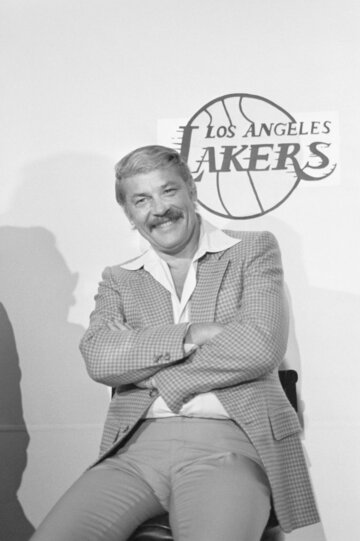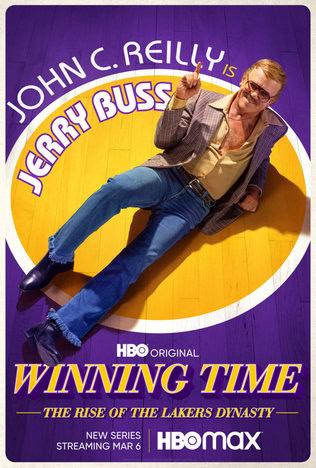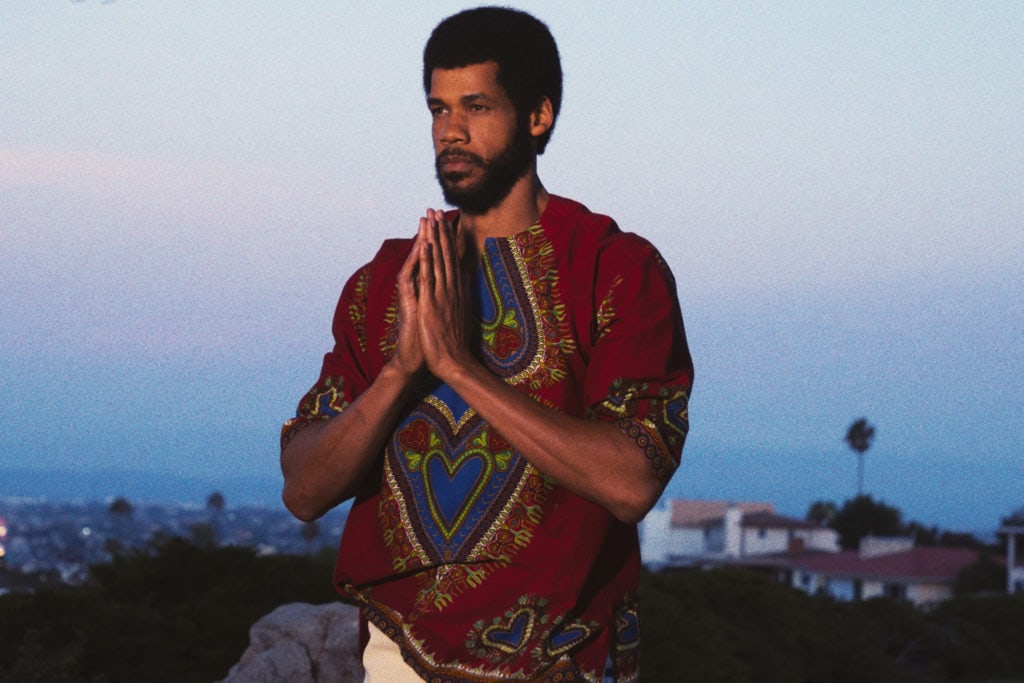The secret sauce to HBO’s basketball-driven drama isn’t alley-oops or accents, rather it’s a costume department deep in the art of character arc.
The future of basketball is on full display. With the NBA Playoffs prospering, the likes of Luka Dončić and Devin Booker are battling it out directly, while rising stars such as Ja Morant and Jayson Tatum look to ascend from All-Star to alpha.
Despite this real-time drama happening in high-octane games, they’re not the basketball event of the weekend.
Rather, it’s Winning Time, the acclaimed HBO series depicting the Showtime Lakers. While spoilers from Sunday’s Season 1 finale have existed for 40 years, somehow the dramatized portrayal of the past is pulling in fans at an equal rate as compared to the future unfolding in front of our eyes.
The success of the show is ironically a sign of the times where hoops are concerned.
In an era where tunnel outfits create conversation as much as highlight dunks, Winning Time leans into both by depicting the spirit, shape, and style of the 1979-80 NBA Season in an authentic fashion.
The point guard for this pace of play is not Adam McKay nor John C. Reily, but rather Emma Potter, the costume designer for episodes two through 10.
“It was a full-time job to make sure it was represented correctly,” Potter told Boardroom. “But I think it really pays off and adds a lot of weight to the story when you can see that it’s represented accurately.”
Accuracy is the aim of any good story, but all the more difficult when pulling from the past. So, how did Potter sew the style of Showtime while working with the tools of today?
Much like the screenplay, the wardrobe was fabricated in places but always archival in its inspiration.
Roster Cuts

When Emma Potter was presented with the task to recreate the wardrobe of Magic Johnson’s Los Angeles Lakers, the opportunity came from her previous work on Season 3 of True Detective. Transitioning from hard crime to the hardwood was an easy pivot for the veteran costume designer.
“It’s a team effort,” says Potter. “When I started the project and we’re looking at all these images, I’m always trying to find the most real photographs of these people. Photos of people on the street, not fashion magazine photographs.”
Over the course of the pandemic, Potter began making mosaics that showcased everyone from Jerry Buss to Kareem Abdul-Jabbar, Pat Riley to Jeanie Buss. The inspiration boards spanned each character’s style starting in the mid-70s and going all the way into the mid-80s. Archival images made certain clothes capable of being recreated while references from the era allowed her and her team to fill in the blanks.

“When you’re working with people that are real people and stories that have actually happened, there’s an even greater sense of responsibility in honoring them and portraying them in a manner aesthetically that feels like a true representation to them,” Potter said.
“Any time you look at the championship games? Those are images of the coaches that everyone knows what they wore so you want to replicate that exactly. But then there are moments in between, these quieter conversations, where you use the information that you have aesthetically.”
To recreate moments seen and imagine the unseen, Potter used the same combination of fact and flair that’s made the show both beloved and critiqued. Constantly honoring each character’s sense of style and psychological arc, Potter and her team dove deep into vintage archives both online and in real life to start with an authentic foundation.
“Putting as much vintage into the show as possible adds a sense of realism,” says Potter. “Characters like Jeanie, Claire, Michael Cooper, and Norm have a lot of real vintage. You go into these wormholes online like, ‘I’m going to look at every pair of cream-colored pair of pants on Etsy and eBay.’ Then four hours later? You find some amazing pieces that way.”
The hours of online searches and sourcing pieces played well for cast members coming in between five and six feet tall. For players portraying 6’9 point guards and seven-foot centers, the process was even harder.

“The majority of what the guys are wearing, we built,” she says. “When you’re looking at someone like Solomon who played Kareem, you’re not going to walk into a store and find those clothes readily available that are period fabric.”
Potter and her team were able to create a world grounded in reality where the characters make the clothes and the clothes make the characters. Though far more personal than her previous work on True Detective in regard to portraying real-life icons, the same sentiment of authenticity was always at the core — whether in The Forum Club or on the court.
“I always feel that way with uniforms of any time,” says Potter. “Whether you’re dealing with military uniforms or police uniforms. In this case, it’s basketball uniforms and sneakers. It’s a fascinating subject in that what one person thinks is just a shoe has this story or different meaning to all these other people.”
Because of this, the inseam on Norm Nixon’s shorts is just as important as the tint on Jerry Buss’s glasses. Michael Cooper’s knee socks mirror that of his early ascent, while Pat Riley’s hair is yet to feel gel.
This dedication to detail helped Potter play perfectly to the senses and swatches of the past, also allowing the space to tell tales through pieces both sentimental and symbolic.
A Tailor of Two Cities
Pulling product tied to Los Angeles in the 1970s while working remotely in the 2020s took time.
However, when Potter is asked her favorite article of wardrobe from Season 1 of Winning Time, the answer is almost immediate.

“It’s Jerry Buss’s Lakers’ belt buckle,” she says. “That was just an idea. It first shows up in the owner’s meeting. There’d been a lot of conversations with John C. Reily and Max Borenstein about how to make him feel kind of inappropriate in this moment when all the other owners are going to be in their stuffy suits and formal attire. I had the idea of this denim Western suit based on his background and we just needed one piece to make it more special.”
The belt buckle — occupying a sort of symbolic real estate in the unbuttoned psyche of Dr. Buss — not only pointed to a new era of the NBA, but also a new form of creation for Potter.
“This is the beginning of branding the Lakers in a different way,” Potter says. “I’d never experienced making a belt buckle before, so it was this whole new thing to delve into and learn about. Jerry Buss is very near and dear because he has such an unusual and iconic look to him. John really inhabited that and embraced it in a way that made the collaboration really fun and added so much to me.”
While the Lakers belt buckle may not have existed until 2022, another favorite for Potter and the cast dates back to the late 1960s and the Wizard of Westwood.
Kareem Abdul-Jabbar, played by Solomon Hughes, is seen wearing a warm-up jacket that represents his reverence for John Wooden, despite his superstar status and new name.

“There’s a montage where they’re getting ready for the playoffs in the locker room and Solomon is wearing an old UCLA warmup jacket,” says Potter. “I’d seen a video on YouTube of Kareem in 1980 talking after a game and he’s wearing this warmup jacket, and then I’d found photos of him obviously when he was younger, playing for UCLA wearing it. I loved the idea of him still wearing that jacket while he’s on the Lakers.”
While Potter loved the idea, the placement and sourcing were harder to actualize.
“We wanted to find a place for it where it wouldn’t feel strange,” Potter says. “They found the vendor who made the original and they knit this perfect replica. When we brought it out for Solomon it was the piece he connected to most of all because I believe his sister had played for UCLA. So it was this piece that he was desperate for us to get into the show in a really nice way.”
Though the Easter egg items provide fan fodder for those in love with fashion, the overall aesthetic of the show is much more than prized possessions worn by LA’s elite. Rather, it’s the less glamourous garb that hits home with an audience old and young.
Reality Television

In working with hair and makeup, Potter and her peers were able to create a stark sense of realism that far contrasts that of Hollywood’s Housewives shows that present pristine images of modern socialites.
“I really enjoy those moments where people don’t look perfectly put together,” Potter says. “Where that’s a bit tight, that’s a bit worn in, or there’s a little stain there? The less pristine the more real I think it is. I love the juxtaposition of Jerry Buss’s shiny cowboy boots with the frayed jeans.”
This not only sets the stage for each character’s psyche, it provides a starting point for their arc.
“When you see Magic first show up at training camp and he’s in sweatpants and a t-shirt compared to the other guys in their glamorous desert attire? I think it’s those moments where you get to feel the realism that kind of helps.”
While Winning Time tackles topics ranging from race to ego, family drama to drugs, the sport of style is one Potter has mastered. Potter herself cites Sally Fields’ wardrobe, which ranges from tastelessly tacky to lavishly elegant, as a personal favorite, with arcs attached to Riley and Abdul-Jabbar as authentic storytelling through tailoring.

Thus her job is never boring.
“The balance of dressing someone as stoic as Kareem or Jerry West compared to being able to dress Sally? It feeds into all your interests in terms of vintage hunting,” she says.
Because of that, Winning Time is a multi-dimensional drama that may massage some details, but never ignores any. Both the fact-finding and cinematic sensationalism blend accuracy and art, cut creatively from a different cloth.